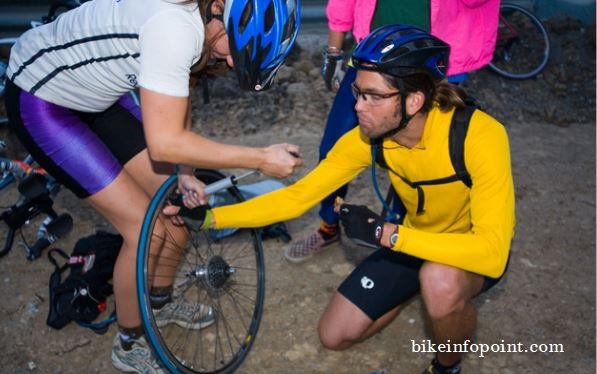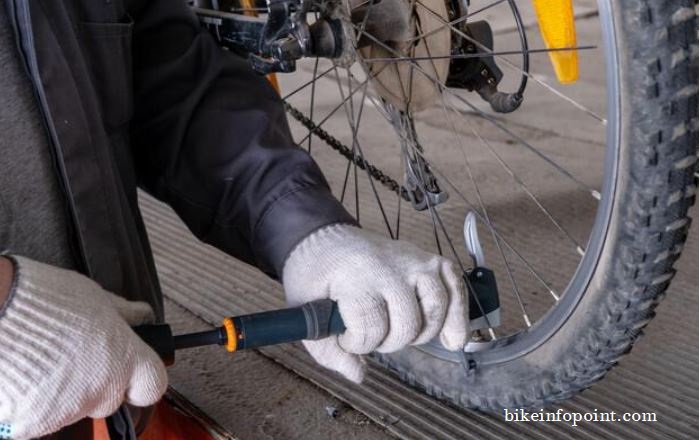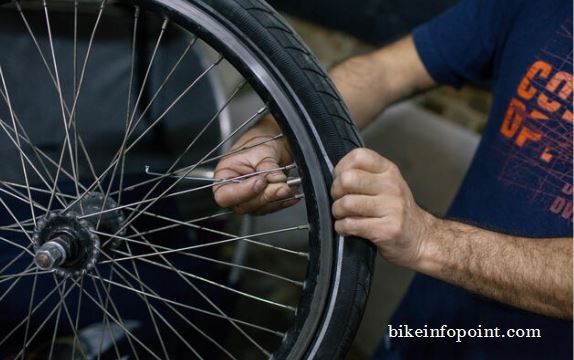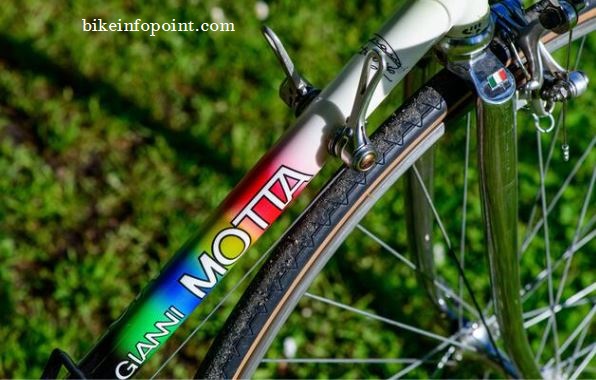
Can you Ride a Mountain Bike with a Broken Spoke
Mountain biking is a thrilling and adventurous sport that requires both skill and equipment. However, accidents can happen, and sometimes your mountain bike may encounter issues such as a broken spoke. This can be a cause for concern, as a damaged spoke can affect the overall stability and functionality of your bike. In this article, we will explore whether it is possible to ride a mountain bike with a broken spoke, and what factors you need to consider before hitting the trails. So, if you’re wondering whether you can still enjoy your favorite sport with a broken spoke, read on to find out more.
Table of Contents
ToggleUnderstanding Mountain Bike Spokes
I. Role of spokes in a bike wheel: Spokes play a critical role in the structure and performance of a bike wheel. Spokes connect the hub of the wheel to the rim, creating a strong and stable structure that distributes the weight of the rider and the bike evenly across the wheel. Without spokes, the wheel would not be able to support the weight of the rider and would quickly deform or collapse.
II. Types of spokes:
There are two main types of spokes commonly used in mountain bikes: straight-pull and J-bend spokes. Straight-pull spokes are typically more expensive but offer greater stiffness and strength, while J-bend spokes are more affordable and easier to replace. The choice between the two types of spokes is often a matter of personal preference and riding style.
III. Common causes of spoke damage: Spokes can become damaged due to a variety of reasons. One common cause of spoke damage is the impact of rocks, roots, or other obstacles on the trail. Over time, the stress of riding can also cause spokes to fatigue and eventually break. Other factors that can cause spoke damage include improper tensioning, improper wheel alignment, or damage to the rim or hub.
Understanding the role of spokes in a bike wheel, the types of spokes commonly used, and the common causes of spoke damage is important for mountain bikers to know in order to properly maintain and repair their bikes. Proper maintenance and care can help prevent spoke damage and prolong the life of a bike wheel.
Signs of a Broken Spoke

Outlines the different ways that a broken spoke can manifest itself on a bike wheel. Identifying the signs of a broken spoke is important to prevent further damage to the bike and ensure the rider’s safety.
I. Visual inspection of the wheel: One of the easiest ways to identify a broken spoke is by visually inspecting the wheel. A broken spoke may be visibly out of place or missing entirely. Additionally, the wheel may be visibly warped or out of true, indicating that one or more spokes are damaged.
II. Unusual sounds or vibrations: When riding a bike with a broken spoke, the rider may experience unusual sounds or vibrations. This is due to the fact that the remaining spokes are being overloaded, causing them to become loose and vibrate against each other. The sound or vibration may be subtle or very noticeable, depending on the severity of the damage.
III. Difficulty in riding or handling the bike: Another sign of a broken spoke is difficulty in riding or handling the bike. A broken spoke can cause the wheel to become misaligned, which can make it more difficult to control the bike. The rider may experience wobbling, swerving, or other unstable handling characteristics. Additionally, a broken spoke can cause the wheel to rub against the brakes or frame, causing additional damage or safety issues.
Identifying the signs of a broken spoke is important to prevent further damage to the bike and to ensure the rider’s safety. If a broken spoke is suspected, the rider should stop riding and inspect the wheel for damage. In some cases, it may be safe to continue riding with a broken spoke, but this depends on a variety of factors and should be approached with caution.
Consequences of Riding a Mountain Bike with a Broken Spoke
Riding with a broken spoke can cause further damage to the bike and potentially lead to accidents or injuries.
I. Further damage to the bike: Riding with a broken spoke can cause further damage to the bike, especially if the broken spoke causes the wheel to become out of true. The remaining spokes will have to work harder to support the weight of the rider and bike, which can cause them to loosen or break. Additionally, riding with a misaligned wheel can cause the tire to wear unevenly, leading to premature wear and tear.
II. Increased risk of accidents: A broken spoke can cause the wheel to become unstable and wobbly, which can increase the risk of accidents. The wheel may be more prone to slipping, especially when riding on uneven or slippery surfaces. In addition, a broken spoke can cause the wheel to rub against the brakes or frame, which can cause the rider to lose control of the bike.
III. Injury to the rider: If the rider loses control of the bike due to a broken spoke, they may suffer injuries in the resulting accident. Falling off a bike can cause a range of injuries, from scrapes and bruises to more serious injuries like broken bones or head injuries. In addition, a broken spoke can cause the tire to blow out, which can also result in injury to the rider.
IV. Increased repair costs: Continuing to ride with a broken spoke can increase the repair costs for the bike. The longer the rider waits to address the issue, the more damage can be caused to the wheel or other parts of the bike. In some cases, the entire wheel may need to be replaced, which can be a costly repair.
It is important for riders to be aware of the potential risks and consequences of riding with a broken spoke. If a broken spoke is suspected, the rider should stop riding and inspect the wheel for damage. If necessary, the spoke should be replaced or the bike should be taken to a professional for repairs to avoid further damage or safety risks.
When it’s Safe to Ride with a Broken Spoke
Riding with a broken spoke can be dangerous and cause further damage, but there are some cases where it may be possible to continue riding with caution.
I. Type and location of the broken spoke: If the broken spoke is located near the hub of the wheel, it may be possible to continue riding with minimal risk. However, if the broken spoke is located near the rim, it can cause the wheel to become misaligned and make it difficult to control the bike. Additionally, a broken bladed spoke may cause more damage than a standard round spoke if it breaks.
II. Wheel condition and spoke tension: The overall condition of the wheel and spoke tension can impact whether it is safe to continue riding with a broken spoke. If the wheel is already out of true or has loose spokes, riding with a broken spoke can cause further damage and be unsafe. However, if the wheel is in good condition and the remaining spokes are properly tensioned, it may be possible to continue riding with caution.
III. Type of riding and terrain: The type of riding and terrain can also impact whether it is safe to continue riding with a broken spoke. If the rider is doing casual or low-impact riding on flat terrain, it may be safe to continue riding with a broken spoke.
IV. Rider’s weight and riding style: The rider’s weight and riding style can also impact whether it is safe to continue riding with a broken spoke. Heavier riders put more stress on the bike and may not be able to safely ride with a broken spoke. Similarly, riders who ride aggressively or with a lot of impacts may not be able to safely ride with a broken spoke.
V. Personal comfort level and risk tolerance: Ultimately, whether it is safe to ride with a broken spoke depends on the rider’s personal comfort level and risk tolerance. If the rider is uncomfortable or feels unsafe riding with a broken spoke, they should not continue to ride.
How to Fix Broken Spokes on a Bike
How to Ride with a Broken Spoke
Some tips and guidelines for riders who choose to continue riding with a broken spoke. Riding with a broken spoke can be dangerous and cause further damage, but there are some steps riders can take to minimize the risk.
I. Inspect the wheel and spoke: Before continuing to ride with a broken spoke, it is important to inspect the wheel and spoke to ensure there is no further damage. The rider should check the spoke hole in the rim to make sure it is not damaged, and check the tension of the remaining spokes to ensure they are properly tensioned.
II. Adjust riding style and speed: Riders should adjust their riding style and speed when riding with a broken spoke. The rider should avoid high-impact riding and technical terrain, and should ride at a slower speed to minimize stress on the wheel and remaining spokes. The rider should also avoid sudden movements or jerky motions that could cause the wheel to become unstable.
III. Shift weight distribution: Riders can shift their weight distribution to reduce stress on the wheel and remaining spokes. The rider should try to distribute their weight evenly on the bike and avoid putting too much weight on the side of the broken spoke.
IV. Inflate tires properly: Proper tire inflation can help reduce stress on the wheel and remaining spokes. The rider should make sure the tires are properly inflated to the recommended pressure to avoid excessive wear and tear on the tire and rim.
V. Carry spare spokes and tools: It is a good idea for riders to carry spare spokes and tools with them in case of further damage or breakage. If another spoke breaks, the rider can replace it on the trail to minimize the risk of further damage.
VI. Monitor the bike for further damage: It is important for riders to monitor the bike for further damage when riding with a broken spoke. The rider should periodically inspect the wheel and remaining spokes for damage or looseness and should stop riding immediately if any issues are detected.
Riders should consider the above guidelines and factors before deciding whether to continue riding with a broken spoke. In most cases, it is safer to replace the broken spoke or take the bike to a professional for repairs to avoid further damage or safety risks.
In conclusion, continuing to ride on a broken spoke can put extra stress on the remaining spokes, leading to more damage and a potentially costly repair. Therefore, it is best to take the time to replace the broken spoke or seek professional help before riding your mountain bike again.


